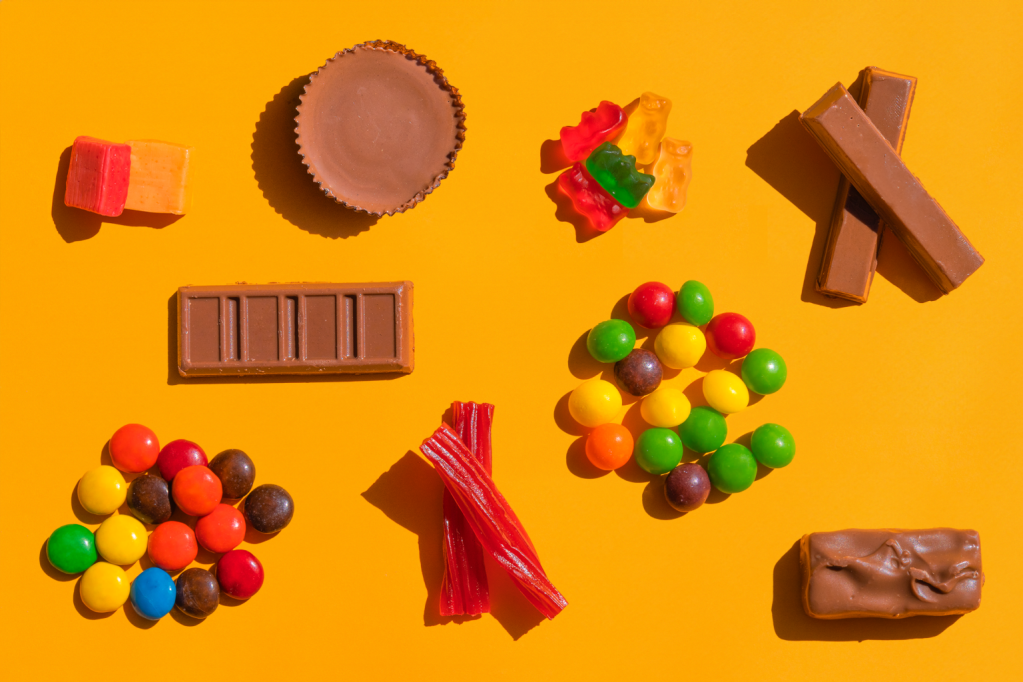Your cart is currently empty!

Your little one is already sweet enough. Foster healthy eating habits for your babe by avoiding added sugar.
The U.S. Department of Agriculture (USDA) has recently unveiled guidelines¹ designed to foster healthy eating habits that will benefit children throughout their lives. One of the most significant recommendations is the strict avoidance of added sugar for babies and toddlers under 2. Exposing infants to added sugar increases their risk of developing a lifelong preference for unhealthy, overly sweet foods.²
Unfortunately, sugar is a master of disguise. Just because you don’t see the word “sugar” on your little one’s favorite snack doesn’t mean it hasn’t snuck its way in there. Sugar goes by loads of different names, making it easy for manufactures to hide. Shockingly, over 68% of food products sold in the United States contain added sweeteners—even if they are labeled as “natural” or “healthy.”³
Shockingly, infants under 1-year-old consume an average of one teaspoon of added sugar daily, while toddlers aged 1-2 consume six.⁴
Other Names for Sugar
Simple Sugars:
- Dextrose
- Fructose
- Galactose
- Glucose
- Lactose
- Maltose
- Sucrose
Solid or Granulated Sugars:
- Corn syrup solids
- Crystalline fructose
- Dextrin
- Diastatic malt
- Ethyl maltol
- Florida crystals
- Glucose syrup solids
- Maltodextrin
- Sucanat
Liquid or Syrup Sugars:
- Agave Nectar/Syrup
- Barley malt
- Blackstrap molasses
- Brown rice syrup
- Buttercream
- Caramel
- Carob syrup
- Corn syrup
- Evaporated cane juice
- Fruit juice
- Fruit juice concentrate
- Golden syrup
- High-Fructose Corn Syrup (HFCS)
- Malt syrup
- Maple syrup
- Molasses
- Rice syrup
- Refiner’s syrup
- Sorghum syrup
- Treacle
What “Added Sugar” Means
Added sugar refers to any sugar not naturally occurring in unprocessed foods or beverages. Natural sugars found in breast milk and fresh fruits are perfectly suitable for babies. However, any processed food containing additional sugar should be strictly avoided when feeding your baby.
Steering Clear of Added Sugar
Infants and young children have minimal room in their diets for added sugars. This is due to their high nutrient requirements relative to their small serving sizes. Each morsel should be meticulously chosen to meet their nutritional needs. Foods with added sugars rob precious dietary space that could otherwise be allocated to nutrient-packed foods such as vegetables and fruits.
Moreover, the period from birth to a child’s second birthday is pivotal in shaping healthy dietary patterns that will influence lifelong eating behaviors and overall health. The introduction of overly sweet foods during this formative stage can establish preferences for overly sugary fare. Therefore, avoiding added sugar during this period is crucial for nurturing lasting, healthful eating habits in your child.
Happy Healthy Hearts
In alignment with the USDA’s recommendations, the American Heart Association also advises parents to steer clear of added sugars for babies under two years old. This advice stems from research indicating that consuming high-added-sugar foods during childhood heightens the risk of heart disease, high blood pressure, obesity, and other health conditions.⁶
The Buzz on Honey
Babies younger than 1 year old should not be given honey. This is due to the presence of a specific bacterium known as Clostridium, which can lead to infant botulism.⁷ Infant botulism is a condition characterized by muscle weakness, marked by symptoms such as difficulty in sucking, a feeble cry, constipation, and increased floppiness.
Artificial Sweeteners
So are artificial sweeteners okay? Not exactly. The sweetness can still lead to a preference for overly sugary foods later in life. There’s also still a lot to learn about the ways artificial sweeteners affect people’s health. Some studies have shown that certain ones alter the makeup of important gut bacteria.⁸
Sneaky Sources of Added Sugar
A study revealed that two-thirds of babies under age one have already consumed added sugar, with over 98% of toddlers ingesting it on a typical day.⁹ Here are some common sources of added sugar that you should refrain from feeding your baby:
- Flavored Yogurt: Opt for plain yogurt with fruits
- Baby and Toddler Snacks: Surprisingly, even seemingly healthy snacks marketed for children can contain added sugars. YUMI’s rice-free puffs and toddler snack bars have no added sugars.
- Juices and Fruit Drinks: These beverages are a leading source of added sugar for babies aged 12-23 months.
- Baked Goods: Commercially available baby food and some toddler meals also harbor added sugars.
- Candies, Sweets, and Ice Cream: Naturally, these sugary treats should be off-limits for babies and young children.
By following these guidelines you’re taking a significant step towards nurturing a lifelong appreciation for nutritious, delicious foods. Remember, your child won’t miss what they’ve never tasted—making the choice for healthful eating habits an easy one.
Sources
- U.S. Department of Agriculture and U.S. Department of
Health and Human Services. Dietary Guidelines for Americans, 2020-2025.
9th Edition. December 2020. Available at DietaryGuidelines.gov. - Paglia L. The sweet danger of added sugars. Eur J Paediatr Dent. 2019 Jun;20(2):89. doi: 10.23804/ejpd.2019.20.02.01. PMID: 31246081.
- Popkin BM, Hawkes C. The sweetening of the global diet, particularly beverages: patterns, trends and policy responses for diabetes prevention. The lancet Diabetes & endocrinology. 2016;4(2):174-186. doi:10.1016/S2213-8587(15)00419-2.
- Hidden sugars in food. Hidden Sugars: How Much Sugar is in Kids Food and Drinks? (n.d.). https://www.hopkinsallchildrens.org/Services/Pediatric-and-Adolescent-Medicine/Healthy-Weight-Initiative/Resources-for-All-Ages/Hidden-Sugars
- Kids and added sugars: How much is too much? (2023) www.heart.org. Available at: https://www.heart.org/en/news/2018/05/01/kids-and-added-sugars-how-much-is-too-much.
- Vos MB, Kaar JL, Welsh JA, Van Horn LV, Feig DI, Anderson CAM, Patel MJ, Cruz Munos J, Krebs NF, Xanthakos SA, Johnson RK; American Heart Association Nutrition Committee of the Council on Lifestyle and Cardiometabolic Health; Council on Clinical Cardiology; Council on Cardiovascular Disease in the Young; Council on Cardiovascular and Stroke Nursing; Council on Epidemiology and Prevention; Council on Functional Genomics and Translational Biology; and Council on Hypertension. Added Sugars and Cardiovascular Disease Risk in Children: A Scientific Statement From the American Heart Association. Circulation. 2017 May 9;135(19):e1017-e1034. doi: 10.1161/CIR.0000000000000439. Epub 2016 Aug 22. PMID: 27550974; PMCID: PMC5365373.
- Arnon SS, Midura TF, Damus K, Thompson B, Wood RM, Chin J. Honey and other environmental risk factors for infant botulism. J Pediatr. 1979 Feb;94(2):331-6. doi: 10.1016/s0022-3476(79)80863-x. PMID: 368301.
- Ruiz-Ojeda FJ, Plaza-Díaz J, Sáez-Lara MJ, Gil A. Effects of Sweeteners on the Gut Microbiota: A Review of Experimental Studies and Clinical Trials. Adv Nutr. 2019 Jan 1;10(suppl_1):S31-S48. doi: 10.1093/advances/nmy037. Erratum in: Adv Nutr. 2020 Mar 1;11(2):468. PMID: 30721958; PMCID: PMC6363527.
- Kirsten A. Herrick, Cheryl D. Fryar, Heather C. Hamner, Sohyun Park, Cynthia L. Ogden. Added Sugars Intake among US Infants and Toddlers. Journal of the Academy of Nutrition and Dietetics, 2019; DOI: 10.1016/j.jand.2019.09.007










